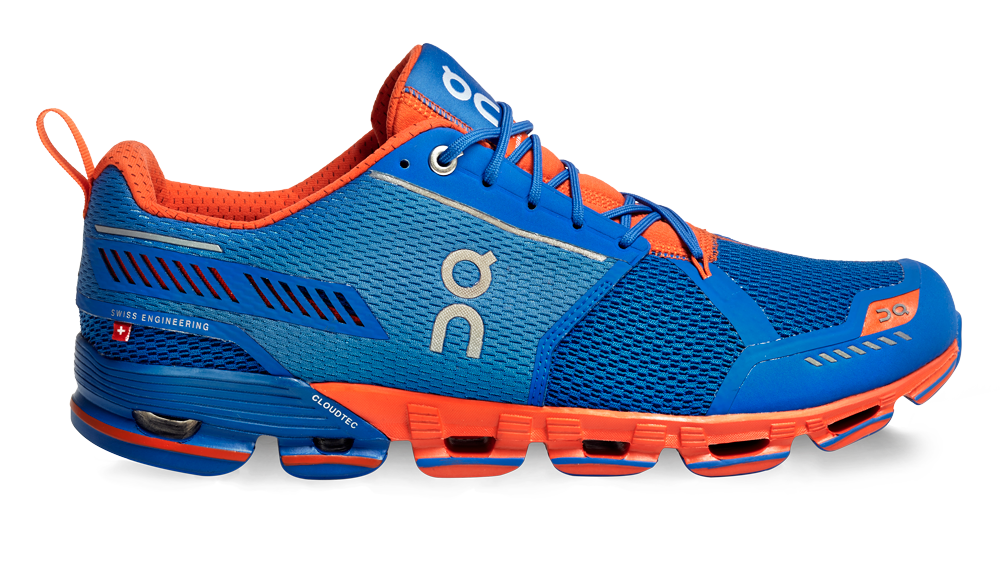
Thomas: The craftsmanship of the shoe is evident from the moment you pick it up. Every seam, stitch, overlay, design detail, even the midsole and outsole are flawless. I am paying more attention to the first impression of a shoe’s quality and how materials feel when I first get my hands on them. There appears to be a widening gap between shoes that look and feel cheap versus shoes that feel upscale before you even put them on your feet. The On shoes feel like quality. The shoe has held up well, after 50 miles the Cloudflyer still looks new. The only sign of minor cosmetic wear is on the outsole.The Swiss design of the Cloudflyer also appeals to me, clean and precise. Overall fit is good and the experience of running in the shoe feels pretty standard. What isn’t standard is the insole. The insole is surprisingly luxurious, plush even. Most brands throw in a slab of thin foam, the Cloudflyer has an insole that rivals Ortholite insoles. Unlike some shoes with lugs or zero drop, the On Clouds do not need a break-in period.
Meaghan: The On Cloudflyer is marketed as a stability shoe, but don’t let the title fool you. There is no medial post or plastic inserts. I find most stability shoes to be stiff and uncomfortable. This shoe is not. The stability feature is found in the heel “clouds” that are intended to promote “running motion without inward rotation.” Compared to the Cloudsurfer, the pods are much less prominent. They have more pod, less air. They seem slightly more durable. I haven’t seen any wear after 60+ miles in them.
I really like the upper design. It’s simple, sleek and supportive where it needs to be. Plus, it’s a really comfortable shoe. The interior lining is soft and the plush tongue allows you to tighten up the laces without feeling too much pressure. Since the shoe’s tagline is “I make long runs shorter,” I decided to take them out for a 20 miler. I wouldn’t say they made the run shorter, but they remained comfortable throughout. The Cloudflyer is surprisingly light – W7.5 came in at 8.3oz.

Thomas: The ride of the Cloudflyer is firmer than I would expect with the CloudTec cushion pods. The pods were noticeable in the forefoot, but the fun feeling from the pods in the Cloudsurfer is missing. On toe-off, I really noticed the segmented pods and not in a good way. Traction in wet conditions was non-existent. The toe-box did not feel as secure around corners. Things got a little sloppy. The lacing is unusual if you ever need to replace the laces, take a picture of the configuration before you attempt it.
Meaghan: Despite loving the look of this shoe, it took several runs to enjoy the miles. I didn’t love the fit. I felt my heel slipping quite a bit on the first few runs. They also felt a little unstable, almost as if they were a size too big. I ended up adjusting the laces which helped a lot with both issues.
Thomas: I really enjoyed running in the On Cloudsurfer vs Cloudflyer. (I know it gets confusing.) Obviously a personal preference, but the Cloudflyer felt like a “normal” trainer. It wasn’t different enough to sway me on feel alone. If you are looking for something different than the standard brands then Cloudflyers will be your choice. I really wanted to love these, but they didn’t resonate with me as much as the Cloudsurfer. For my size 10.5 the shoe weighed in a 10.75 oz. The drop is 7mm and the shoe is listed as a stability model.
Meaghan: Like Thomas, I preferred the Cloudsurfer over the Cloudflyer. If you’re familiar with Newtons, the Cloudflyer is like the Energy NR. It works as a transitional shoe into the brand. If you’re not so sure about the Swiss and their CloudTec® system I would start with this shoe. If you’d prefer to go all-in, go for the Cloudsurfer.

Have something to say? Leave a Comment